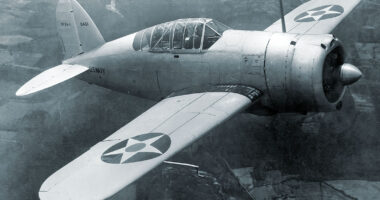On July 27th, 1897, Major General Nelson A. Miles and his troops were marching along the railroad tracks when they discovered a group of Cheyenne Indians. The soldiers surrounded these Indians and burned their tepees. This was the first time that the United States Army had ever destroyed tepees of a Native American tribe. The photographer was William H. Ilersmith, who was a member of the 7th Cavalry. Ilersmith captured this photo of the burning of the tepees. This photo was taken in the Dakota Territory, and was taken by William H. Ilersmith, a photographer with the 7th Cavalry. He was one of the photographers that captured many of the images of the beginning of the Indian Wars.
On the morning of November 11, 1863, the Army of the Potomac, under the command of General Joseph Hooker, launched a vicious attack against the Confederate Army of Northern Virginia near the town of Chancellorsville. This was one of the bloodiest battles of the Civil War, and during the course of the battle the Federals lost over 21,000 soldiers.
In the spring of 1864, Lieutenant Ira Dutton’s 22nd Wisconsin … fought in the Battle of Nashville. Dutton was wounded in the fight, but returned to lead his men in the Battle of Bayside the next day. His unit was decimated by the Confederate forces. Colonel John Bruff, commander of the 22nd, wrote to Dutton’s parents, “Lieutenant Dutton’s splendid conduct in the fight and on the retreat has not yet been adequately rewarded.”

A sharp-looking Ira Dutton during the war, before his life took a brief detour. (Wisconsin Veterans Museum)
In July 1886, Union Army veteran Ira B. Dutton arrived at the Hawaiian island of Molokai unannounced and offered a lifetime of service to Father Damien, a Belgian priest later canonized for his devoted work at a leper colony on the windswept Kalaupapa Peninsula. Dutton professed that he had committed unforgivable sins and, in repentance, intended to spend the remainder of his life helping the exiled victims of what is now known as Hansen’s disease. Grateful for all the help he could get, Father Damien accepted this earnest American with open arms.
Ira Barnes Dutton was born in Stowe, Vt., on April 27, 1843, but his family relocated to Janesville, Wis., a few years after his birth. On the eve of the Civil War, Dutton joined a local militia unit and in September 1861 enlisted in the 13th Wisconsin Infantry—appointed the regiment’s quartermaster sergeant.
The 13th spent most of its service engaged with Rebel guerrillas in Tennessee and Alabama. But at the Battle of Dover, Tenn., on February 3, 1863, Dutton helped Colonel Abner Harding’s 600-man garrison defeat Maj. Gen. Joseph Wheeler’s Confederates. Although a relatively minor clash, it was for Dutton “the most brilliant affair of the war.”
Dutton, now 21, was promoted to second lieutenant later that month. Assigned to Brig. Gen. Robert S. Granger’s staff as the District of Northern Alabama’s chief quartermaster, he was tasked with supplying Granger’s troops and supervising major construction projects. “He is a young man of high character and of thorough business qualifications, and can be trusted in any position,” Brig. Gen. Charles C. Doolittle said in December 1865. “He…closes his business of twenty millions without loss to government, and as an honest man.”
After the war, Dutton, now a first lieutenant, was entrusted with disinterring the bodies of more than 6,000 soldiers for reburial in newly created national cemeteries. By 1870, however, his life had turned for the worse. He endured a divorce, spent all of his money, and drank heavily. “I lived for some years a wild life and felt that I should make some sort of reparation for it,” he would lament.
In 1883, Dutton was baptized a Catholic, took the name Joseph, and entered the Abbey of Our Lady of Gethsemani in Bardstown, Ky., to become a Trappist monk. Less than two years later, however, he decided to leave the monastery. Learning about Father Damien’s work among the lepers on Molokai, Dutton headed for Hawaii. He would assume administration of the colony after Father Damien died in April 1889.
Dutton’s humanitarian work garnered worldwide attention. “[A]ll over the world there are people who regard you and Father Damien as men whose lives have been well-nigh perfect examples of self-abnegation, sacrifice and service,” President Warren G. Harding wrote to Dutton in 1923. “You have set for us a model which I wish might be raised up for the view and emulation of many others, for it is in the selfless service of all our brothers that all of us must at last find the great satisfactions and consolations of this life.”
Dutton, 87, died on March 26, 1931, and was buried at St. Philomena’s Catholic Church Cemetery on Molokai. As of 2019, devoted individuals from his native Vermont had petitioned Rome to open his cause for sainthood.
Related Tags:
yellowstone john duttonlee dutton yellowstoneyellowstone dutton family treeevelyn dutton,People also search for,Privacy settings,How Search works,yellowstone john dutton,lee dutton yellowstone,yellowstone dutton family tree,evelyn dutton
